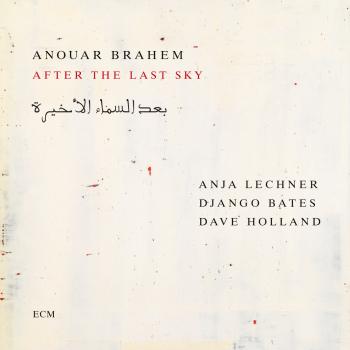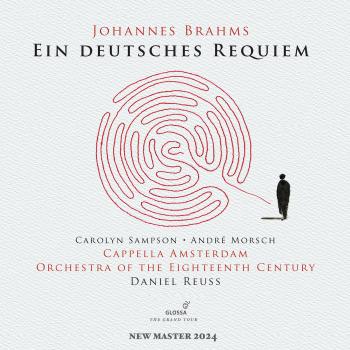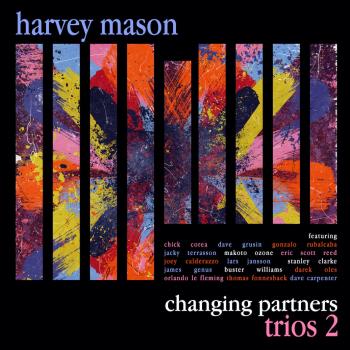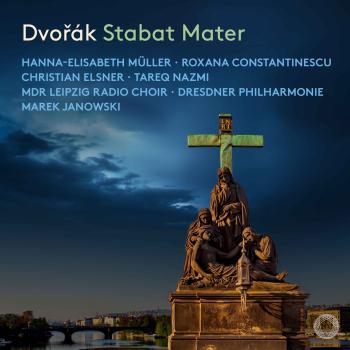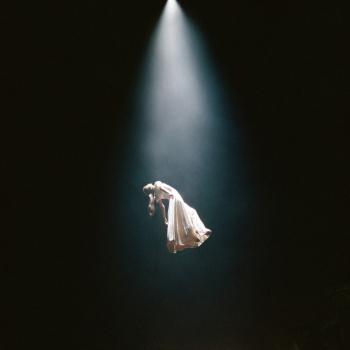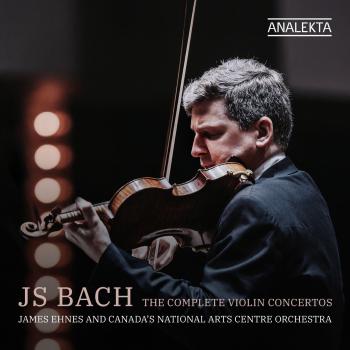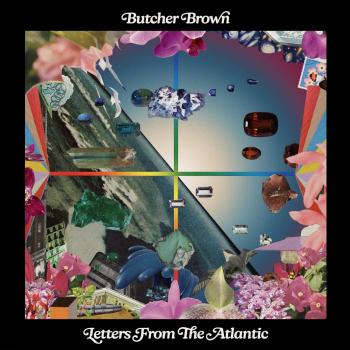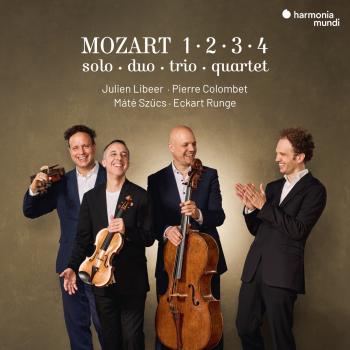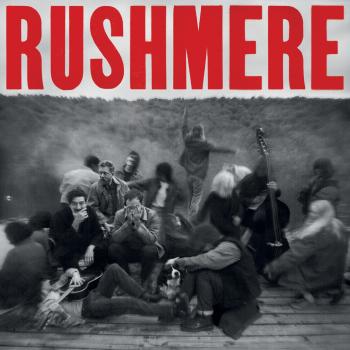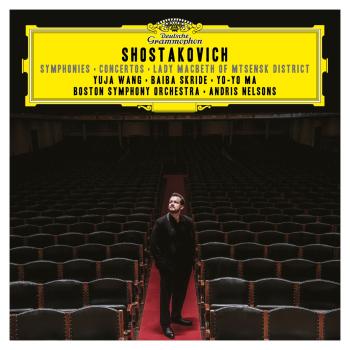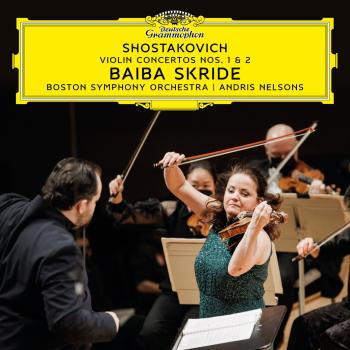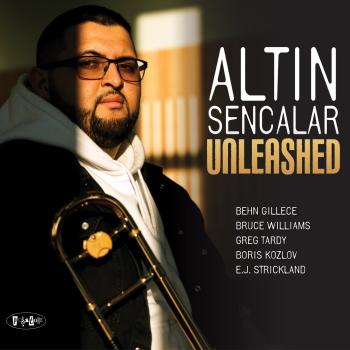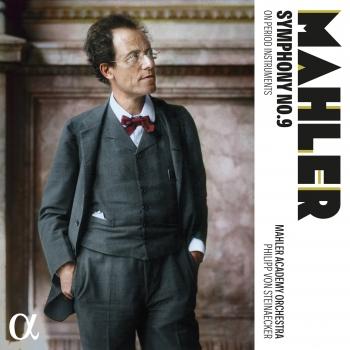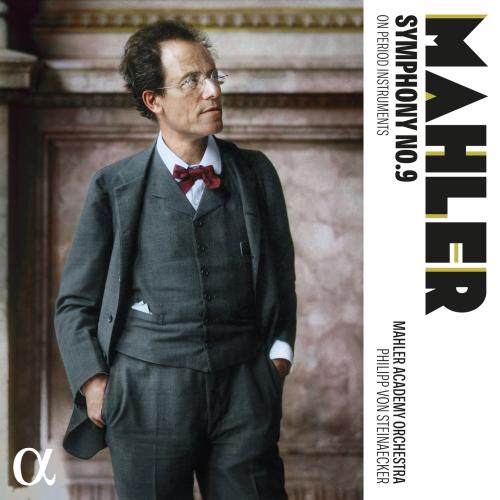
Mahler: Symphony No. 9 on Period Instruments Mahler Academy Orchestra & Philipp von Steinaecker
Album Info
Album Veröffentlichung:
2024
HRA-Veröffentlichung:
21.06.2024
Label: Alpha Classics
Genre: Classical
Subgenre: Orchestral
Interpret: Mahler Academy Orchestra & Philipp von Steinaecker
Komponist: Gustav Gustav Mahler (1860-1911)
Das Album enthält Albumcover Booklet (PDF)
- Gustav Mahler (1860 - 1911): Symphony No. 9 in D Major:
- 1 Mahler: Symphony No. 9 in D Major: I. Andante comodo: No. 1, Andante comodo 05:46
- 2 Mahler: Symphony No. 9 in D Major: I. Andante comodo: No. 2, Etwas frischer 02:27
- 3 Mahler: Symphony No. 9 in D Major: I. Andante comodo: No. 3, Plötzlich sehr mäßig und zurückhaltend 02:55
- 4 Mahler: Symphony No. 9 in D Major: I. Andante comodo: No. 4, Mit Wut. Allegro risoluto 04:15
- 5 Mahler: Symphony No. 9 in D Major: I. Andante comodo: No. 5, Schattenhaft 02:03
- 6 Mahler: Symphony No. 9 in D Major: I. Andante comodo: No. 6, Bewegter 03:08
- 7 Mahler: Symphony No. 9 in D Major: I. Andante comodo: No. 7, Wie von Anfang 01:57
- 8 Mahler: Symphony No. 9 in D Major: I. Andante comodo: No. 8, Plötzlich bedeutend langsamer und leise 06:00
- 9 Mahler: Symphony No. 9 in D Major: II. Ländler: No. 1, Im Tempo eines gemächlichen Ländlers. Etwas täppisch und sehr derb 02:38
- 10 Mahler: Symphony No. 9 in D Major: II. Ländler: No. 2, Pocco piu mosso subito 02:16
- 11 Mahler: Symphony No. 9 in D Major: II. Ländler: No. 3, Tempo III. Ländler, ganz langsam 01:39
- 12 Mahler: Symphony No. 9 in D Major: II. Ländler: No. 4, A tempo II 02:49
- 13 Mahler: Symphony No. 9 in D Major: II. Ländler: No. 5, Tempo I. Wie zu Anfang 01:29
- 14 Mahler: Symphony No. 9 in D Major: II. Ländler: No. 6, Tempo II 01:28
- 15 Mahler: Symphony No. 9 in D Major: II. Ländler: No. 7, Tempo I. Subito 03:09
- 16 Mahler: Symphony No. 9 in D Major: III. Rondo Burleske: No. 1, Allegro assai. Sehr trotzig 01:51
- 17 Mahler: Symphony No. 9 in D Major: III. Rondo Burleske: No. 2, L’istesso tempo (I) 01:14
- 18 Mahler: Symphony No. 9 in D Major: III. Rondo Burleske: No. 3, Sempre l’istesso tempo 01:23
- 19 Mahler: Symphony No. 9 in D Major: III. Rondo Burleske: No. 4, L’istesso tempo (2) 01:39
- 20 Mahler: Symphony No. 9 in D Major: III. Rondo Burleske: No. 5, Etwas gehalten 02:49
- 21 Mahler: Symphony No. 9 in D Major: III. Rondo Burleske: No. 6, [Clarinets] 01:56
- 22 Mahler: Symphony No. 9 in D Major: III. Rondo Burleske: No. 7, Tempo I. Subito 02:38
- 23 Mahler: Symphony No. 9 in D Major: IV. Adagio: No. 1, Sehr langsam und noch zurückhaltend 04:03
- 24 Mahler: Symphony No. 9 in D Major: IV. Adagio: No. 2, Plötzlich wieder langsam (wie zu Anfang) und etwas zögernd 02:07
- 25 Mahler: Symphony No. 9 in D Major: IV. Adagio: No. 3, Molto adagio subito 03:29
- 26 Mahler: Symphony No. 9 in D Major: IV. Adagio: No. 4, A tempo. Molto adagio 02:13
- 27 Mahler: Symphony No. 9 in D Major: IV. Adagio: No. 5, Stets sehr gehalten 01:42
- 28 Mahler: Symphony No. 9 in D Major: IV. Adagio: No. 6, Fliessender, doch durchaus nicht eilend 01:35
- 29 Mahler: Symphony No. 9 in D Major: IV. Adagio: No. 7, Tempo I. Molto adagio 05:10
- 30 Mahler: Symphony No. 9 in D Major: IV. Adagio: No. 8, Adagissimo 04:08
Info zu Mahler: Symphony No. 9 on Period Instruments
Diese Aufnahme von Mahlers Neunter Symphonie ist ein Ereignis, denn sie wurde mit historischen Instrumenten eingespielt, wie sie der Komponist in Wien benutzte. Das Mahler Academy Orchestra hat es sich zur Aufgabe gemacht, dieses Instrumentarium zu rekonstruieren und zu erforschen, wie Musiker der damaligen Zeit es spielten: »Wir waren bei den Proben beeindruckt von der unglaublich ausgeprägten Charakterisierung der Holzbläser, dem schmetternden Klang der Blechbläser, der perfekten Balance zwischen den Instrumenten und dem reinen und warmen Klang der Streicher ... Sie brachten Mahlers brillante Orchestrierung auf ein neues Niveau«, so Philipp von Steinaecker, künstlerischer Leiter dieses ehrgeizigen »Originalklang«-Projekts und Dirigent dieses Orchesters, das rund fünfzig junge Musiker der besten Instrumentalisten aus den weltweit führenden Formationen (Amsterdam Concertgebouw, Mahler Chamber Orchestra Orchestra, Budapest Festival Orchestra, Staatskapelle Dresden, Wiener Symphoniker usw.) vereint. Gemeinsam haben sie diese historische Aufnahme in Toblach in Italien gemacht, wo Mahler 1909 seine monumentale Sinfonie, zwei Jahre vor seinem Tod, komponierte.
Mahler Academy Orchestra
Philipp von Steinaecker, Dirigent
Philipp von Steinaecker
was the first recipient of the Orchestra of the Age of Enlightenment’s Melgaard Young Conductor position. Since then he has had broad experience as a guest conductor with many orchestras. Equally at home in the German romantic repertoire as in the works of the Second Viennese School, his passion and profound stylistic understanding for the music of the baroque and classical periods led him to found his own period instrument orchestra Musica Saeculorum.
Originally trained as a cellist, he worked extensively with Sir John Eliot Gardiner in the Orchestre Révolutionaire et Romantique and with Claudio Abbado, first as a founding member of the Mahler Chamber Orchestra and at the Lucerne Festival Orchestra and later as his assistant and as a guest conductor of his Orchestra Mozart. Both conductors have been an important inspiration to him and have had a strong influence on his musical development.
He has collaborated with many leading instrumental soloists and singers, including Camilla Tilling, Dorothea Röschmann, Isabelle Faust, Guy Braunstein, Daniel Müller-Schott, Fazil Say, Sara Mingardo, Andrew Staples, Mia Person, Hanno Müller Brachmann, Peter Harvey and Boris Belkin.
Recent highlights include return engagements with the Swedish Radio Symphony Orchestra, New Japan Philharmonic, Slovenian Philharmonic and debuts with the orchestra of the Maggio Musicale Fiorentino, Fondazione Toscanini di Parma, Residentie Hague Philharmonic and Prague Philharmonia. He has conducted critically acclaimed productions of Mozart’s Magic Flute at the Teatro Filarmonico di Verona and Gounod’s La Colombe at the Chigiana in Siena and in 2017-18 he will appear at the Paris Phillharmonie in a production of Haendel’s Giulio Cesare. Other highlights have included engagements with the Orchestra Mozart (Bologna), Camerata Salzburg, Orchestra del Teatro Comunale di Bologna, Orchestra della Toscana, Orchestra Haydn di Bolzano and the Kristiansand Symphony Orchestra.
With Musica Saeculourm he has appeared at the Cologne Philharmonie, the Internationale Barocktage Stift Melk in Austria, the Festival des Pâques d’Aix-en-Provence and the Philharmonie Essen. The group has already an impressive discography including recordings of Handel’s Messiah, Haydn’s Creation (nominated for International Classic Music Award 2015), Bruckner’s Symphony N.1, Bruckner’s Motets, Mahler’s Das Lied von der Erde and a CD with arrangements for Salon Orchestra. A new CD with Camilla Tilling featuring arias by Mozart and Gluck was released on the Swedish label BIS in February 2017.
Booklet für Mahler: Symphony No. 9 on Period Instruments

